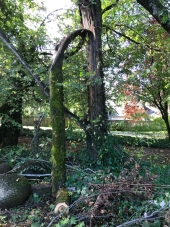Hi, I'm new to Permies but wanted to introduce myself. I go by Dan, my wife Carol and I have a small...what I call "Micro Ranch" in North Texas. We've been building our homestead here for a few years and since I've always been one to try unique things, I decided to bring a new breed of cattle to this side of the world that had previously only been in the UK. Enter Shetland Cattle! Since we bought this 22 acres back in 2010 I have gone through various breeds of cattle and noticed that most commercial breeds were either finicky about the grass they liked, were too large, too aggressive, or just didn't have everything I was looking for in a homesteader's cow. I stumbled on the Shetland breed by happenstance while browsing forums and discovered that the Shetland was checking off all the boxes... medium-sized, docile, marbled beef, high butterfat milk (and lots of it). Shetland cattle are considered a heritage breed that is listed in the UK's Rare Breed Survival Trust (the equivalent to our Livestock Conservancy) They number only about 800 in the UK, a few in Australia, and now 7 in Texas. Rather than go into all the great attributes of the Shetland cow here, the breed societies in Scotland have done a great job and you'll find that info here
Shetland Herd Book Society &
Shetland Cattle Breeders Association I also have a Facebook site
Shetland Cattle USA
It was a long and arduous project getting the breed established here in the U.S. Working closely with breed enthusiasts in Scotland and the Shetland Islands, I managed to import 15 embryos and 200+ straws of genetically diverse bull semen from 5 different bulls. Getting them cleared through the U.S.D.A and customs and shipped into the U.S. was an administrative nightmare, but I persevered in spite of what all the established cattlemen were telling me here in Texas. The first embryos were transferred into Angus cows in 2017 and the first 3 births were in 2018. I've had 4 more using the same process in 2019. I'll be working on my own website this year but I feel like it's time to get the word out about this awesome breed. You might say I'm a bit partial, but I believe them to be the perfect homesteader and permie family cow/s. Being that I'm starting from scratch with a limited gene pool, I'll be selectively breeding and flushing embryos from females I have on the ranch using the aforementioned bull semen. I hope to be able to implement a unique program while building the herd in that I will be seeking a cooperative relationship with those that purchase heifers and cows from me to ensure genetic diversity is maintained. For those willing to participate, I will be including 1 bull semen straw to get them started on perpetuating full-blood, registered Shetlands. Too often people confuse the Shetland with their fellow countrymen cows, the Highland, but Shetland is a completely different breed. While their perfectly suited for colder climates, I've proven over the last 2 years that they do very well in warmer climates like Texas too! Think about it, Aberdeen Angus came from Scotland...and their black color would indicate a tough time in the heat, yet you find them thriving everywhere.
For those looking to introduce hybrid vigor into their herd, Shetland Bull semen and live bulls will also be available. For natural service in the field, it's likely the Shetland bull will be best suited for smaller breeds like the Dexter, Mini-Jersey and the likes, as his medium-size stature may prevent him from breeding with larger breed cows.
Now that I've found Permies, I can't wait to round out my knowledge in all things permaculture. I'm looking forward to setting up an aquaponics system soon. Please PM me with any questions.
Here's a pic of the 1st 3 Shetland Calves on this side of the globe!




 These cattle came from the Shetland Islands where there is little feed, and is likely to be the reason for the hardiness and purity of the breed as only the toughest survived the harsh winters. I've proven they're just as hardy in hot and humid Texas as well.
These cattle came from the Shetland Islands where there is little feed, and is likely to be the reason for the hardiness and purity of the breed as only the toughest survived the harsh winters. I've proven they're just as hardy in hot and humid Texas as well.


